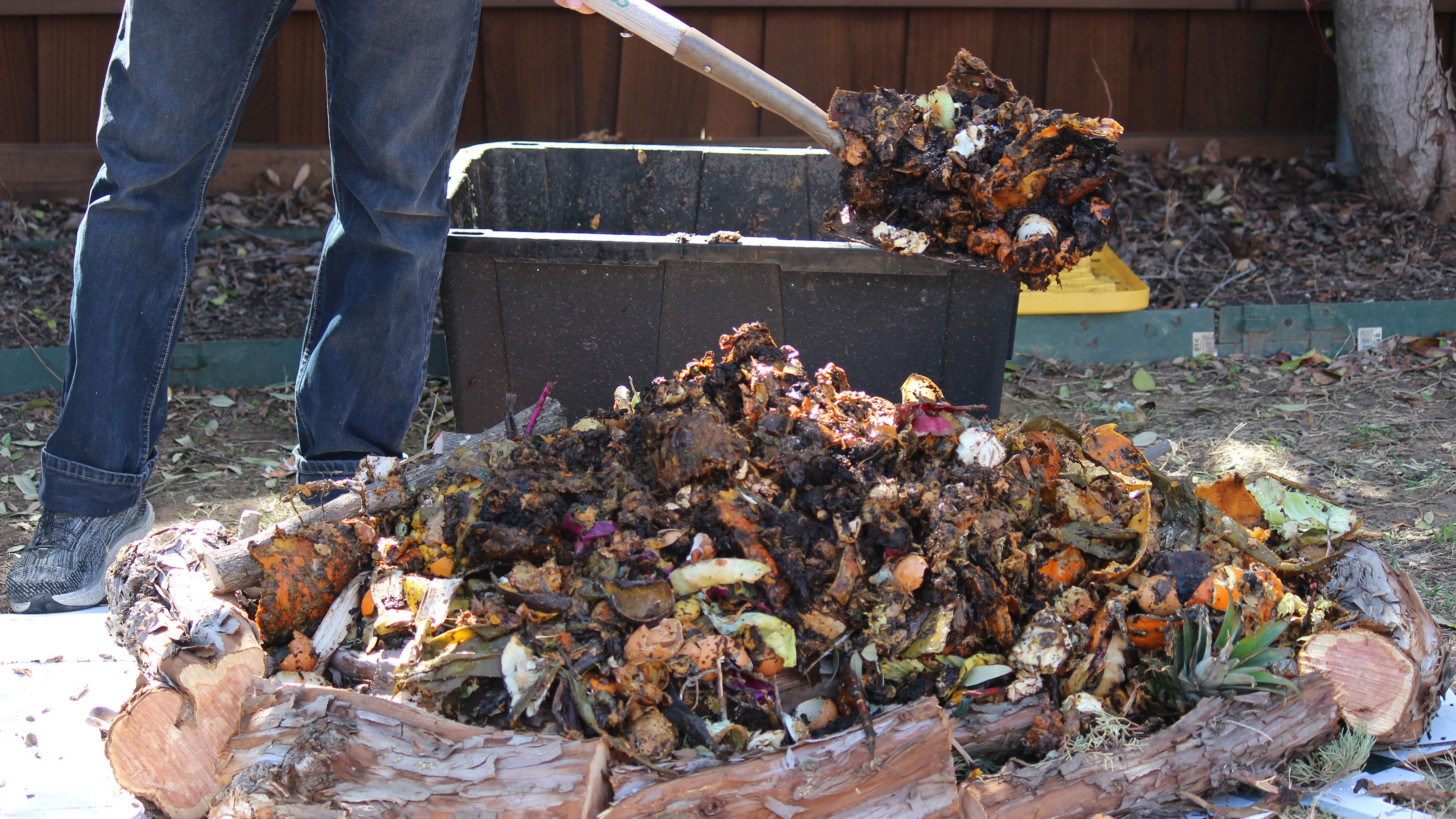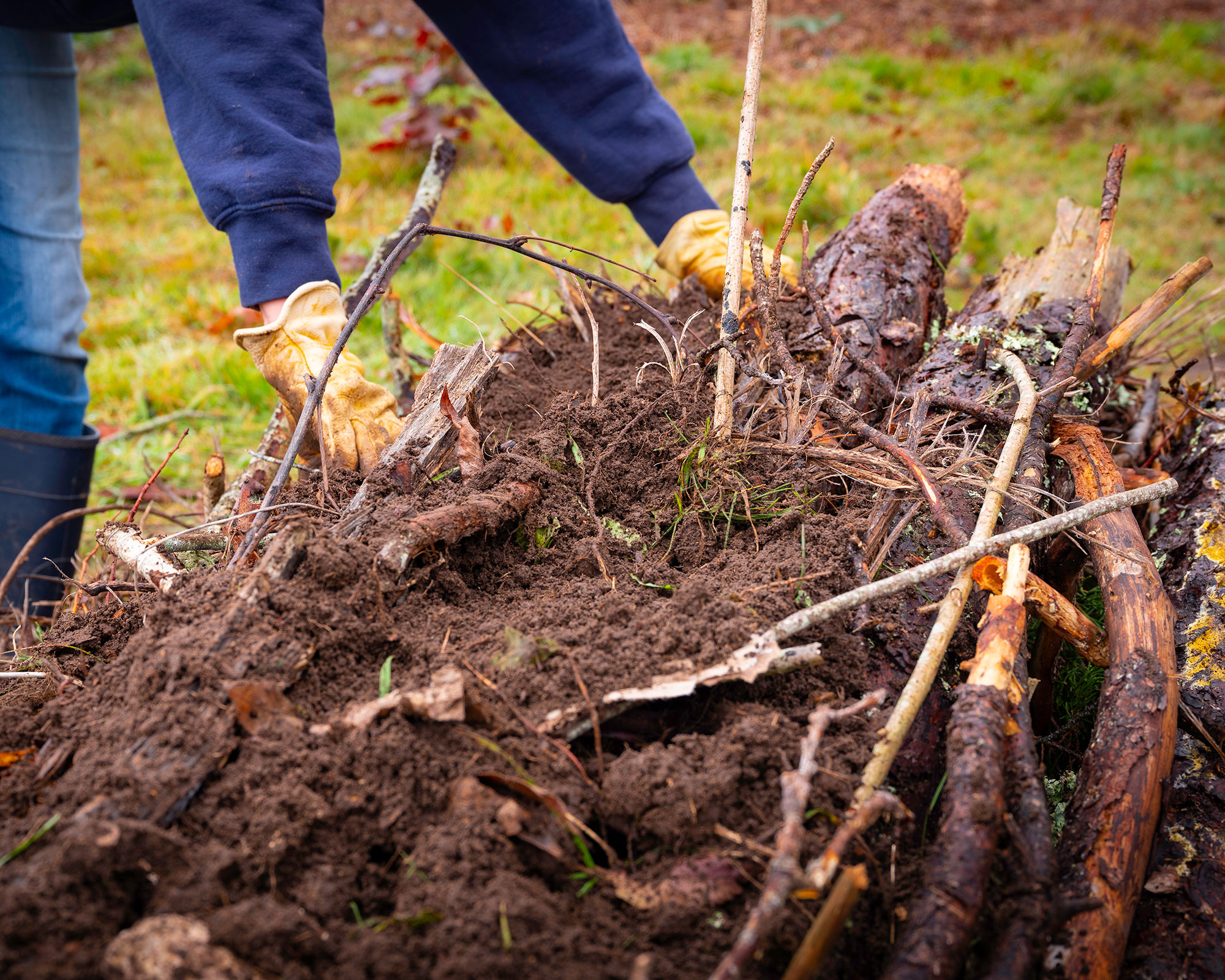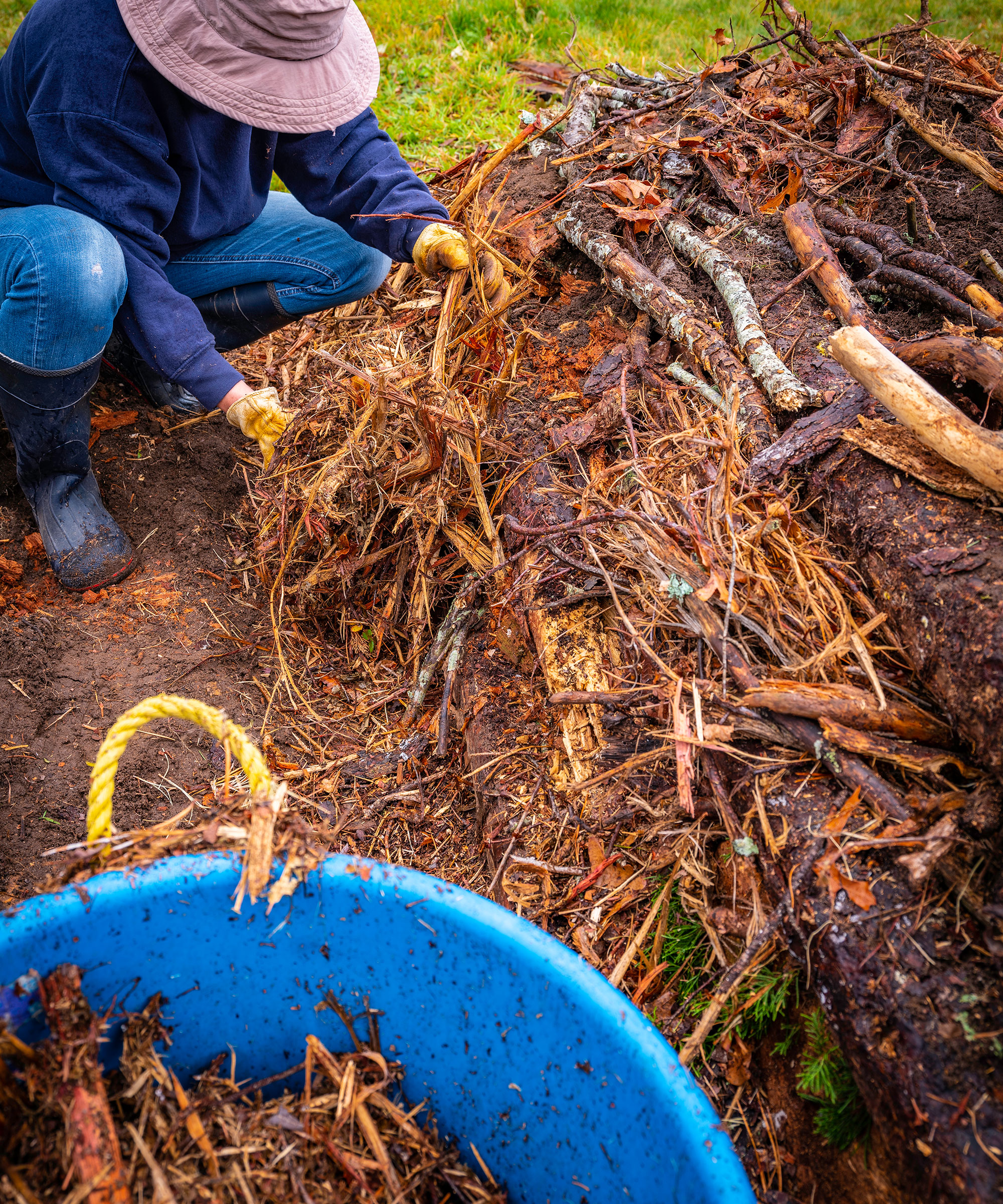Why the hügelkultur trend is gaining fans and could transform backyard vegetable growing
Homegrown veggies could soon be raised on a mound of earth, if new interest in the old-fashioned hügelkultur method of gardening catches on


The latest trend in growing veggies, coming from California – one of the US states suffering from unprecedented drought – is hügelkultur, or ‘mound culture’.
It’s a method of cultivation that utilises almost every scrap of waste and retains water at the same time, so no wonder this is a garden trend that's becoming popular with those interested in sustainable gardening.
But just what is it about this gardening method that makes it so accessible to anyone, no matter where they live?

Lots of different garden materials can be used to create a hügelkultur mound
What is the hügelkultur trend and how does it work?
Hügelkultur is German for ‘hill-mound’ or ‘hill culture’. The idea was pioneered by Austrian permaculture expert Sepp Holzer in the 1960s and 1970s and the hugkultur movement is now finding new fans in the USA.
With vegetable growing on the up in the US – 35 per cent of US household now raise their own crops – gardeners are looking for new ways to raise their crops whilst saving precious water. The bonus of hügelkultur is that it’s highly moisture-retaining.
In hügelkultur, a mound of wood, trunks, branches, wood chips and straw is built up on the soil, or on a log or tree slice. Alternatively, a raised garden bed, trough or wooden enclosure may be used. Natural waste such as plant clippings, grass cuttings and kitchen peelings are added to contribute to the mix, rather like a compost heap.
This organic matter is allowed to rot down over time to create a warm and moist self-sufficient ecosystem that needs minimum water and even creates its own liquid.
When the hügelkultur mound is ready – typically after around three years - it provides a welcoming nutrient-rich environment for all kinds of kitchen garden crops, including potatoes, swedes, turnips and carrots.

Swedes are a great crop for growing using the hügelkultur method. Swede 'Gowrie' from Thompson & Morgan
The many benefits
Homesteader Jennifer Poindexter, a contributor to the home and garden website Morning Chores, is a hügelkultur convert and says that this no dig gardening method brings other benefits too.
'It’s a good way to get rid of garden waste – such as trees, hardwoods such as oak, maple and birch are ideal – cluttering up your property. And it’s adaptable. You can start a hügelkultur mound anywhere and you don’t need special or expensive equipment.'

Adding garden waste to a hügelkultur mound is a great way to keep your yard tidy
Sustainable solution
Landscapers in California are keen to tout the benefits of the hügelkultur trend and say that if this sustainable garden method takes off wide-scale, it could even help to reverse damaging climate change.
'As landscape professionals in the age of climate change, we have access to ways we can impact the vitality of our surroundings,' say influential hügelkultur fans, landscape architect Shawn Maestretti and eco-designer Leigh Adams, of California Landscape Design. 'Prioritizing water, biodiversity and carbon will make it so a significant planetary shift can occur.'

Jayne Dowle is an award-winning gardening, homes and property writer who writes for publications including Sunday Times Home, Times Bricks & Mortar, Grand Designs, House Beautiful and The Spectator. She was awarded the Garden Journalist of the Year accolade at the Property Press Awards in 2021.
